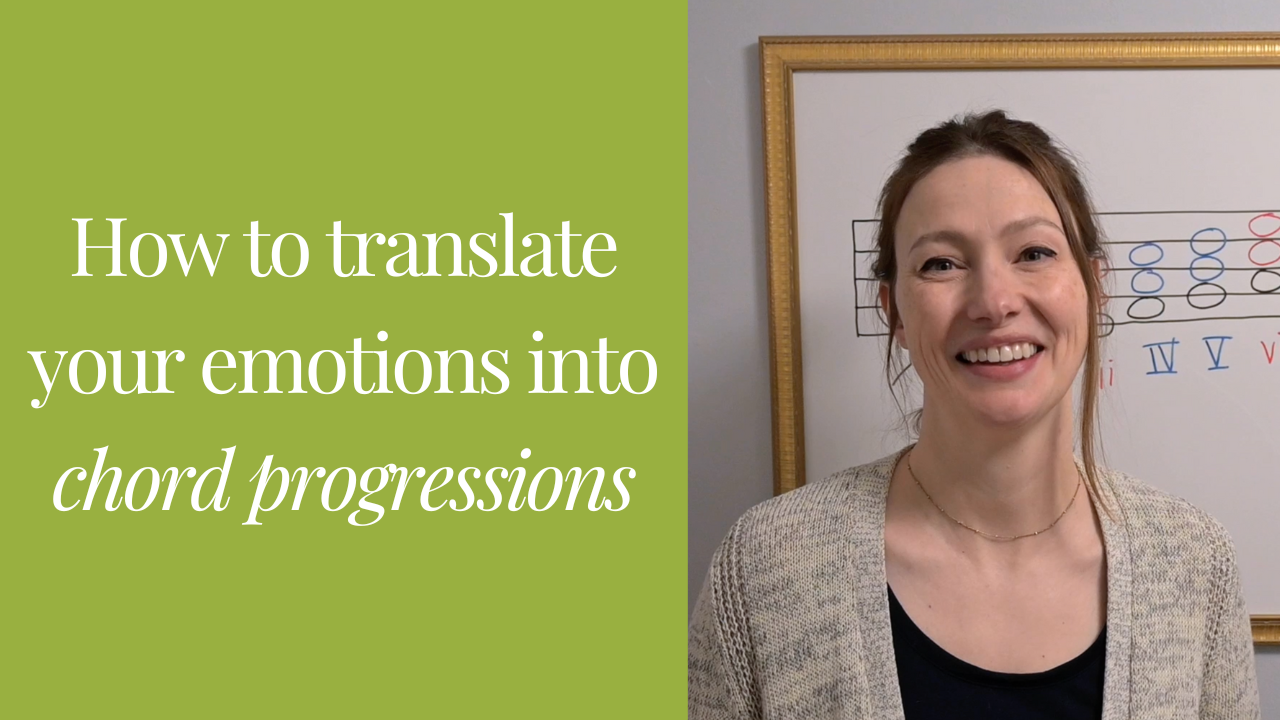Let’s make piano plans for 2024!
The New Year is a great time to set new goals for ourselves, and I thought today it could be good for us to come together to share our goals and support each other in achieving them. As a piano teacher, I notice how often success in achieving goals is linked to the quality of the goal itself, so today I’d like to share three pieces of advice to help you create the most sustainable and motivating goals possible!
Common variations to chords in the major key signature
Recently we’ve been talking about the chords within any major key signature and how you can use them to create chord progressions that express different feelings. Today I’d like to expand on this to talk about some of the variations to the standard chords that musicians often use to express even more emotions in their music.
How to translate your emotions into chord progressions
Once you know the basics of where the major and minor chords are in a key signature, you’re ready to start experimenting at your piano and finding sequences or chord progressions that you like. But it can be difficult to get started at first because the possibilities for your music seem so endless. How do you know which chords to use and which ones will work best for your song?
Building your piano practice mindset
I think most of us have felt the pressure to be a good student and practice every day. Some people find the routine of daily practice to be really motivating. But I was never one of those people. I had to find my own ways to get motivated to practice, and today I’d like to share what I’ve learned in case it helps you!
Thinking about the future can derail your practice today
Today I'd like to share about a bad habit that I used to have, one that I see in my students from time to time. This habit involves taking an idea that seems fun and overthinking it to the point of becoming intimidated by the possible futures it might bring. Can you relate to this?
My favourite rhythm pattern for beginners
Playing along with your favourite songs is the best way to learn piano, but it can be difficult to get started if you don’t know what to do with your hands.
Today I’m sharing a really simple piano accompaniment pattern that’s easy to learn but has a huge range of applications if you want to play music by ear.
Will learning music theory stifle my creativity?
Today’s post is inspired by a viewer's questions about the relationship between music theory and creativity: “Is music theory a set of rules to follow? Will learning music theory stifle our creativity? How do you explain famous musicians who never learned music theory but still create great music?”
I thought these were such great questions because they really get to the heart of what we’re doing as musicians. What are the rules for, if not to be followed?
If you’re hitting a wall in music theory
There’s a point in each of my piano students’ music journey where I notice their questions shift from how music works to why music works the way it does.
The how questions are the easy ones. They’re just questions about mechanics. How to build a major scale, how to build a good rhythm.
But once my students start to understand the mechanics of how music works, then they ask why it works that way. Why does the leading tone draw us to the tonic? Why is the dominant chord so strong in every key signature?
Perceived limitations and piano lessons
Piano lessons are a really interesting educational setting to me.
On the one hand, with the vast history of music to explore, students objectively have the greatest choice of options in terms of what they could learn, compared to other educational topics.
And yet, out of all the educational settings I have taught in (a lot!), piano learners feel the most limited in what they are allowed to learn because of their expectations of what piano lessons are supposed to look like.








